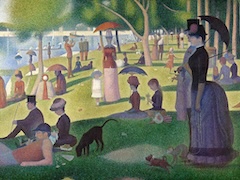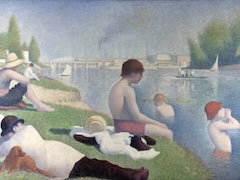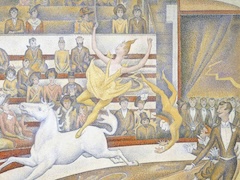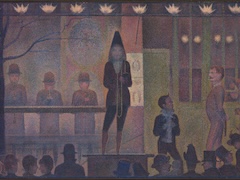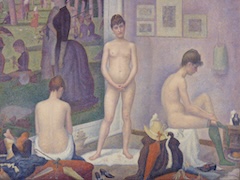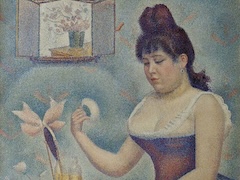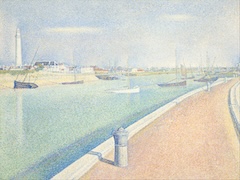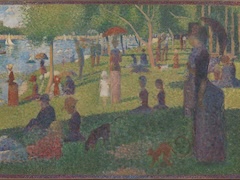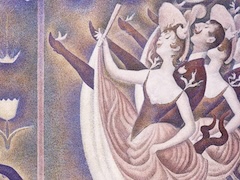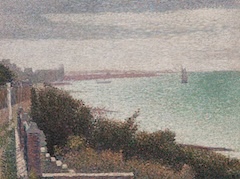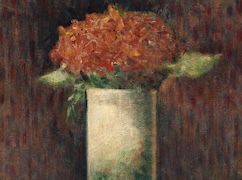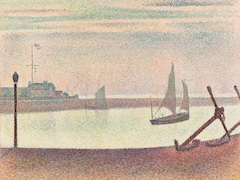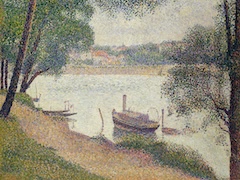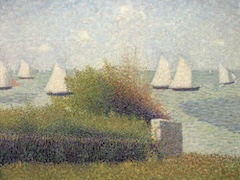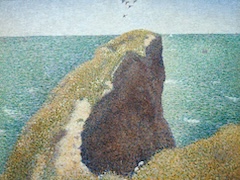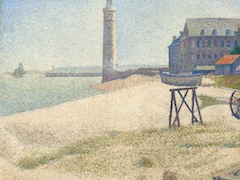Landscape in the Ile de France by Georges Seurat
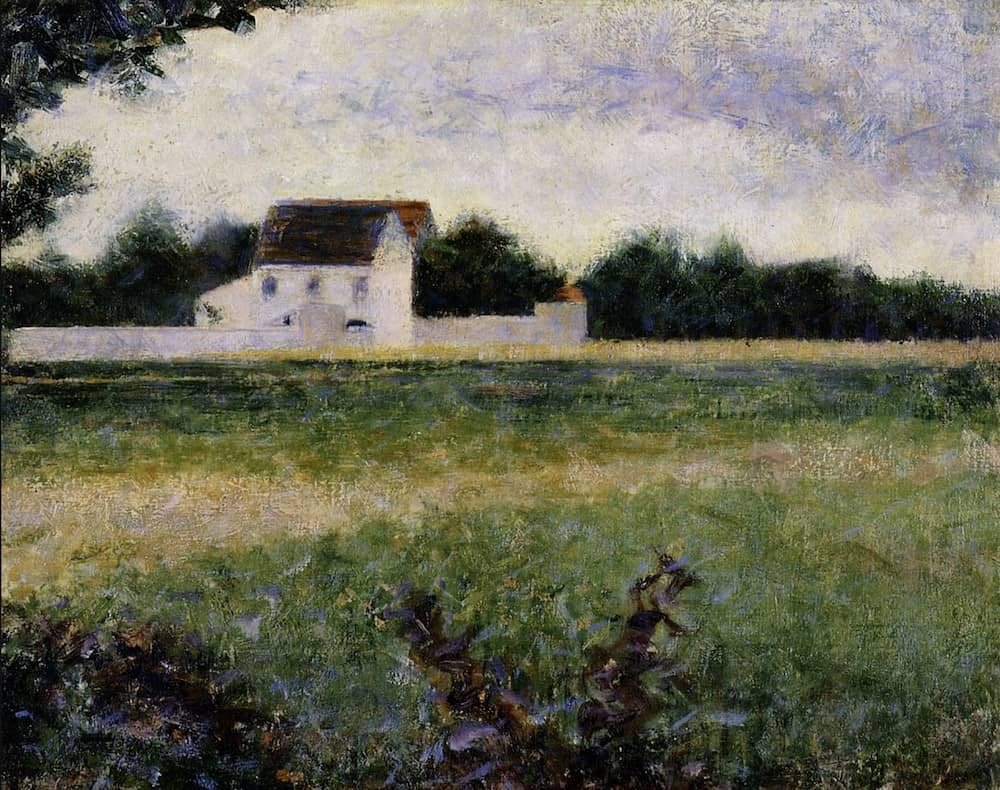
Like Seurat's other early canvases, this picture is small and could easily have been carried about the countryside.
Although it was probably worked on in the studio and has a strong geometric order that smacks of arbitrary invention, it also has the character of a sketch taken from nature. Within its limited palette, for example, the narrow yellow band in front of the pale blue wall captures the look of a field of ripe hay or grain, foreshortened by the low vantage point. Similarly, the walls of the building are delicately varied, convincing us that Seurat stared fixedly at them. The gable end is a pinkish cream, turning to greenish-blue at the peak; the windowed wall is bluish gray, tinted differently from the low wall that runs along the front.
In most areas, Seurat followed the principle of broken color by Eugene Delacroix. At the base of the canvas, several warm tones are mixed with the greens, and farther back, pinks, or oranges, and wine reds are scattered among the greens and blue-greens. The dull pink path that slants across the field contrasts with the greens. The roof is a broken color, an unresolved mixture of blue and ruddy brown; the distant foliage is wine red and blue at the bottom, changing to green as it nears the sky which has contrasting pink mixed with pale cream. These oppositions are relatively subdued compared with Seurat's later works.

